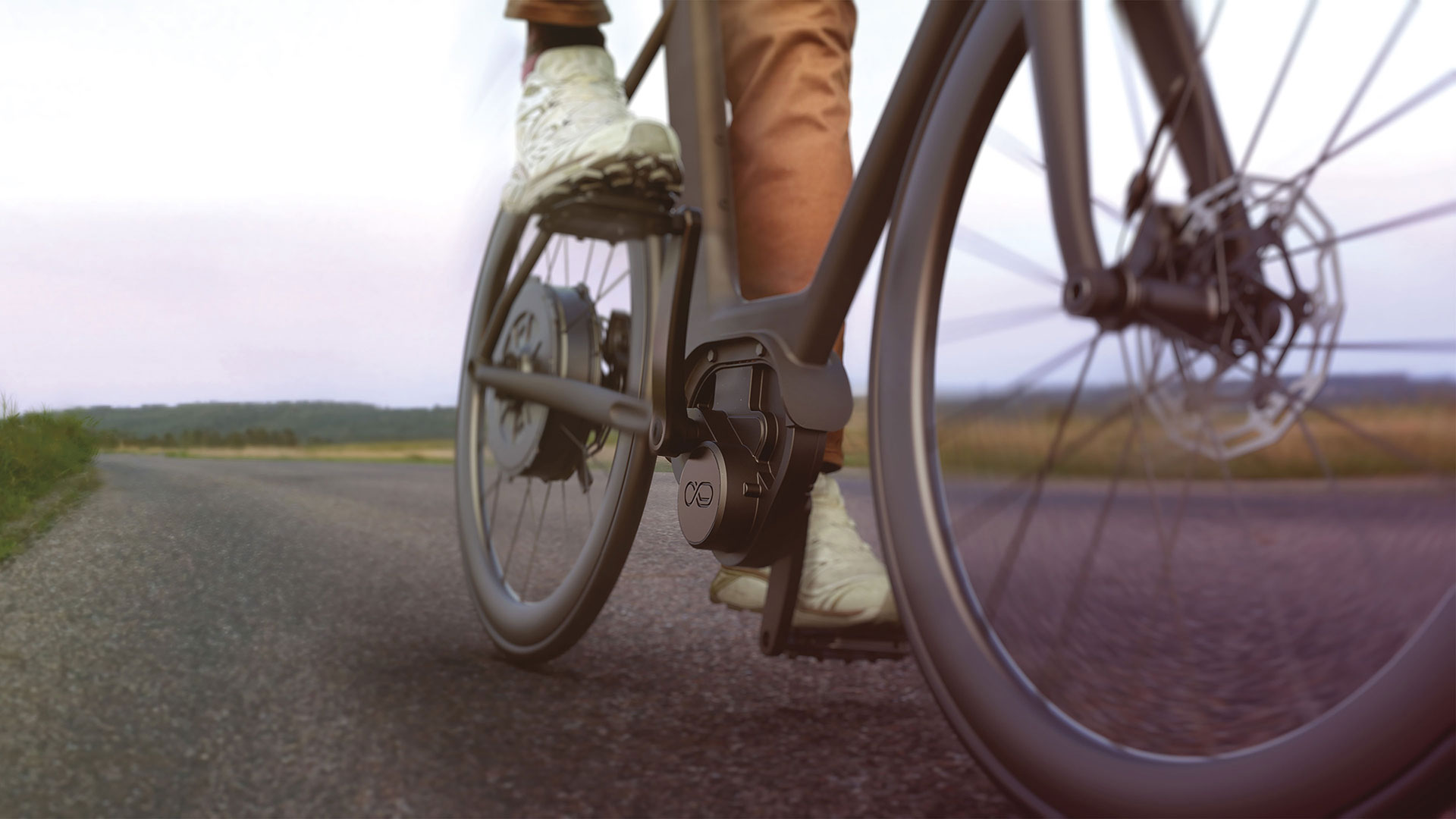We need to stop with the proprietary bike parts. A bike that isn’t able to be repaired destroys a lot of the benefits of bike ownership.
Agreed. That’s one of the big benefits of cheap bikes currently - cheap, available parts that work in a wide range of bikes. There’s always been proprietary shit though, this particular tech isn’t new in that regard.
Oh god. Another “we need to stop…” post.
This is how innovation happens - one company creates a thing, and years later another company creates a better thing. You want to stop innovation? Stick with your logic and only have the first thing. But then you’d likely have 1 gear, poorer braking, no electrics, etc, etc.
At some point innovation overwhelms tradition and the new thing is the standard part, like a Shimano gearset which, at one point, was a custom part.
I’ve been burned by buying the wrong pivot (CP/M, Colecovision, Dreamcast, Betamax, Laserdisc) over the years, but now innovation kept going and so my M2 Mac, AppleTV and Synology library all work smoothly together. If you’re going to cry every time you see something new and hate it, you’re going to have a hard time in the future.
Are you implying that there is zero innovation with open standards?
First off, it would be “inferring”, not implying. I imply, you infer.
Next, no - I’m not saying that. That’s moving the goalposts. I’m saying your original statement of no new technology that not open source is a fallacy too. Proprietary tech often leads the way in innovation, and then that becomes the target of open tech as the tech is duplicated, refined, and then commodified.
How is that moving a goal post? Proprietary parts often mean the only the original manufacturer can upgrade or repair. Open standards allow anyone to build additional parts that are compatible.
This is not a hypothetical situation. There are thousands of high quality e-bikes with proprietary batteries, and sometimes the manufacturer does not offer replacement batteries.
When the battery is dead, the consumer has very few choices. With open standard hardware they can simply buy another battery. Why is this simple concept hard for you to understand?
Try leaving that first sentence out in the future, so you don’t immediately come across as a smug asshole not worth engaging with.
Interesting. I offer to explain how grammar works. You decide to berate and insult me and I’m the “smug asshole”? Hm.
Know what I like the most? The block feature. It allows me the opportunity to have more interesting conversations with more educated, open-minded people. Wheat from chaff, as it were.
Language, as well as grammar, should be looked at as a living document. It’s always changing, growing, evolving as society does the same.
And yes, when your first response to someone has to do with grammar, and not to do with what they said to you, you’re saying “Actually, what you meant to say…” and that’s where the smug asshole hangs out. (Ironic, I know.)
They did not ask for a grammar lesson, nor was one warranted. Come down off your high horse.
They also misrepresented what I wrote, so yeah - I had an attitude about my response but of course you’ll ignore that to attack from another side.
Block now on. Adios.
deleted by creator
this chainless system might be the future of e-bike drivetrains
No it won’t. This is one of the dumbest things I’ve ever heard of. Remember those e-scooters that were around in the 2010’s? I had one. They had pedals that were only there to comply with legal requirements and were almost entirely unable to propel the bike; you had to use the throttle. This is basically just one step above that. Just like those scooters, your bike is useless when the battery is low or dead. Meanwhile normal ebikes are perfectly functional bicycles without a battery.
Also your chainless bike is going to turn into a pumpkin in 5 years once the company goes bust and you can’t buy replacement proprietary parts.
I personally can’t see this being the future, but perhaps I’m not visionary enough. But I want to focus on the efficiency argument, since this might be a supposed benefit we can quickly dispense.
A cursory search for “bicycle chain efficiency” reveals the Wikipedia article on bicycle chains stating an “up to 98%” figure, as well as an article with experiments assessing front derailleur sprocket counts , and then a thesis PDF from the year 2000. I won’t bore you by summarizing the details, but all the graphs in Chapter 7 (Chain Efficiency) of the thesis PDF show that for input power above 100 W, the lowest efficiency was still 92%. And importantly, increases with more power applied, measuring a peak of 97% at 205W (PDF page 179).
This range of 92-97% from the PDF agrees with the other article, and the Wikipedia page’s headline figure as well. Since this chainless bike would necessarily be electric, we can assume an equivalent chained, mid-drive ebike would have more than 100 or 200 W of input power, which means the chainless bike should be compared against the higher efficiency range of a chained ebike. For reference, today’s mid-drive ebikes have motor outputs of 250 W and up, plus whatever the rider delivers.
For any discipline of engineering, it’s really hard to make gains when your competition leaves you only 3% to vie for. This is the space that F1 and spacecraft have to deal in, whereas consumer goods like everyday bicycles cannot hope to engineer their way beyond the phenomenal efficiency that is 92-97%. We can fairly confidently rule out mass-market adoption of this chain less technology.
But what these references do not test is the impact of chain length, when elongated by several meters. A prior holder of The World Record For Longest Bicycle built it as a tandem bike, probably because a chain spanning the 35 meter behemoth would be untenable. That bike could potentially be reduced to a single rider by using this chainless technology.
So if you’re building a bicycle where the driven wheel is far enough away – like the length of the first powered, heavier-than-air flight in 1903 at Kitty Hawk, NC, USA – then maybe this could indeed be the technology for you.
You’re right, but I think there are some other benefits to doing away with the chain. I have an E-mountain bike and between chain stretch, chain damage, and mud I go through 2 chains per season plus a couple trail-side repairs. Also, no chain means you can optimize pedal speed/torque for each individual rider, and keep it in the ideal range all the time regardless of bike speed. Essentially it offers a much wider power band than gears and a chain. You could also optimize crank length for clearance instead of torque. The front chainring is also a big point of contact on mountain bikes, removing that could improve clearance with the right design. I’d also be interested in the regenerative braking - if I go on an Enduro ride I’m cooking my brakes on much of the downhill, regen could save those and recharge the battery at the same time. Maybe regen could even lead to a smaller battery and save some weight.
Sure there are disadvantages - weight, complexity, efficiency, probably others too. I think with time those will improve though and this just might be a viable setup for certain use cases.
I do see your points, where the chain itself is the cause of inconvenience or failure scenarios. Since the conventional bicycle is almost the textbook definition of minimal design, there are – and will always ever be – tradeoffs to make, and I concede that efficiency isn’t always everyone’s top priority for their bicycle.
While I cannot discount that this chainless system would ameliorate the situations you described, I can offer some alternatives which can or already do exist today, that could probably be explored and improved over what this chainless system delivers.
chain stretch, chain damage, and mud I go through 2 chains per season plus a couple trail-side repairs
The front chainring is also a big point of contact on mountain bikes, removing that could improve clearance with the right design
The older style of shaft drives in lieu of a chain could be maintenance free, and damage resistant. Efficiency is lower, and roadside repair is much harder, but efficiency is already lowered when in messy terrain, and if it’s fully sealed, it might last a very long time anyway. Reviving this concept is something I could reasonably see.
offers a much wider power band than gears and a chain
Having discrete gear ratios will indeed always be a limiting factor when dealing with variable speeds, but there already exists a CVT (continuous variable transmission) for bicycles, where torque and speed can be traded in non-stairstep fashion. That said, no one makes a CVT with a built in ebike motor… yet.
You could also optimize crank length for clearance instead of torque
I think I understand what you mean here, in that cranks today draw a larger circle to accommodate human physiology, but that also increases the risk of a pedal striking the road, or rocks adjacent to a trail. But I don’t see how this chainless system can change the crank circle diameter on-the-fly. And I don’t envision people wanting that very often, unless they want small diameter on trails and then want to bike home on the roads by switching to a large diameter.
regenerative braking
I think this already exists for ebikes: https://radpowerbikes.zendesk.com/hc/en-us/articles/360045171734-Riding-Rad-with-regenerative-braking
I want to be clear: I’m not trying to shoot down the idea of chainless systems out-of-hand. But rather, these other solutions to your scenarios are more grounded in existing technology, or are waiting to be further refined before mass adoption, and likely will cost a lot less.
Kinda crazy how many different things people have come up with but nothing has beat the chain drive.
Gotta say, a belt drive with an IGH sounds like a nice commuter though.
You write well.
Good start, but you haven’t factored in the multiplicative % losses from converting the stored electricity from the battery back into locomotion.
This is the bike you only have to pedal 5 km, to travel 3.
I left out a discussion on the mechanical-electrical-mechanical conversion losses because I wanted to focus on just the chain itself. My argument being: if a chain can do 97%, how on earth will a chainless system do better? Answer: it can’t, not for the commonplace bike or ebike.
But you’re absolutely right that the double conversion loss must be horrific. Even EVs have contended with a similar choice before and today’s hybrids do tend to be parallel hybrids.
Locomotives are, I think, the only widespread application where the benefits outweigh the costs, bevause the cost of a behemoth transmission for a diesel locomotive would be prohibitive to build. Hence, diesel electric locomotives.
another solution for a problem that doesn’t exist!
👏👏👏👏👏 bravo
It’s not a problem if you don’t buy one. Weird startup ebike companies hate this one simple trick!
So I read this as they doubled the electric motor weight on the bike, reduced energy efficiency by some 50% AND removed direct power transfer as backup. Sounds very promising!
Oh my God. What a fucking stupid idea.
How much efficiency is lost by this regarded system?
regarded
lmao, I recommend leaving the typo
It’s an intentional thing.






